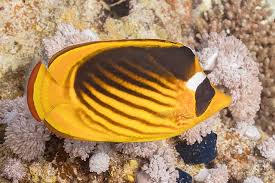Mai flowers, known for their vibrant blooms and cultural significance, exhibit remarkable versatility in landscape architecture. Their adaptability to various design styles and environments makes them invaluable elements in creating stunning and dynamic outdoor spaces. Here, we explore the diverse ways in which Mai flowers can be integrated into landscape architecture to enhance aesthetics, functionality, and cultural identity.

1. Ornamental Focal Points:
Mai flowers serve as striking focal points in landscape design, commanding attention with their vivid colors and graceful forms. Whether planted as standalone specimens or incorporated into mixed plantings, Mai flowers draw the eye and infuse landscapes with a sense of vibrancy and beauty. Placing Mai flowers strategically in key areas, such as entryways, courtyards, or focal beds, creates visual interest and invites exploration within the landscape.
2. Seasonal Interest:
One of the key advantages of Mai flowers in landscape architecture is their ability to provide seasonal interest throughout the year. With proper planning and selection of cultivars, landscape designers can incorporate early-, mid-, and late-flowering varieties of Mai flowers to ensure continuous bloom from late winter to early spring. This seasonal progression adds dynamic color and texture to landscapes, creating ever-changing vistas that delight the senses year-round.
3. Cultural Symbolism:
Incorporating Mai flowers into landscape design pays homage to their cultural significance and symbolism. In Vietnamese culture, Mai flowers are revered as symbols of prosperity, good fortune, and new beginnings, particularly during the Lunar New Year (Tet). By incorporating Mai flowers into landscape architecture, designers can evoke themes of renewal, abundance, and cultural identity, fostering a deeper connection between people and their environment.
4. Functional Diversity:
Mai flowers offer more than just aesthetic beauty; they also contribute to the functional diversity of landscapes. When used as hedges, screens, or border plantings, Mai flowers provide privacy, define spaces, and mitigate noise and wind. Additionally, Mai flowers attract pollinators such as bees and butterflies, promoting biodiversity and ecosystem health within the landscape.
5. Design Flexibility:
The versatility of Mai flowers allows for creative expression and design flexibility in landscape architecture. Whether incorporated into formal gardens, naturalistic landscapes, or contemporary urban spaces, Mai flowers adapt to a wide range of design styles and themes. Designers can play with scale, texture, and spatial arrangement to achieve desired aesthetic effects, from classical elegance to modern minimalism.
Conclusion:
In conclusion, the versatility of Mai flowers in landscape architecture makes them invaluable assets for creating captivating outdoor environments. Whether used as ornamental focal points, seasonal accents, cultural symbols, functional elements, or design features, Mai flowers enrich landscapes with their beauty, meaning, and adaptability. By harnessing the unique qualities of Mai flowers, landscape designers can transform ordinary spaces into extraordinary landscapes that inspire, engage, and uplift the human spirit.
Design Integration and Adaptability:
Mai flowers offer a wealth of design integration possibilities and demonstrate remarkable adaptability in landscape architecture, allowing designers to create cohesive and visually stunning outdoor spaces that resonate with their surroundings and fulfill the needs of users.
1. Formal Gardens and Traditional Landscapes:
In formal garden settings and traditional landscapes, Mai flowers can be incorporated into structured designs with geometric shapes and symmetrical arrangements. Planted in rows, clusters, or as focal points within meticulously manicured beds, Mai flowers lend a sense of elegance and order to the landscape, complementing architectural features such as pathways, pergolas, and water features.
2. Naturalistic Landscapes and Wildscaping:
For more naturalistic settings or wildscaping approaches, Mai flowers can be integrated into informal plantings and meadow-like environments. Mixed with native grasses, wildflowers, and shrubs, Mai flowers create a sense of spontaneity and organic beauty, attracting pollinators and wildlife while providing seasonal interest and color variation throughout the year.
3. Urban Spaces and Streetscapes:
In urban environments and streetscapes, Mai flowers offer opportunities for green infrastructure and urban greening initiatives. Planted in medians, pocket parks, and urban plazas, Mai flowers soften hardscapes, mitigate heat island effects, and improve air quality, enhancing the overall livability and aesthetics of urban areas while fostering community engagement and social interaction.
4. Edible Landscapes and Permaculture Design:
For those interested in edible landscapes and permaculture design, Mai flowers can serve dual purposes as ornamental and functional elements. With proper selection and care, certain cultivars of Mai flowers produce edible fruits or can be used for medicinal purposes, adding value to the landscape while promoting sustainability and self-sufficiency.
5. Contemporary and Eclectic Styles:
In contemporary and eclectic design styles, Mai flowers offer opportunities for creative expression and experimentation. Whether used as sculptural elements, living walls, or art installations, Mai flowers push the boundaries of conventional landscape design, inspiring innovation and pushing the boundaries of what is possible in outdoor environments.
Conclusion:
In summary, the versatility of Mai flowers in landscape architecture knows no bounds, offering endless possibilities for design integration and adaptation across a wide range of environments and design styles. Whether employed in formal gardens, naturalistic landscapes, urban spaces, edible landscapes, or contemporary settings, Mai flowers bring beauty, functionality, and cultural significance to outdoor spaces, enriching the human experience and fostering a deeper connection with nature. By harnessing the inherent qualities of Mai flowers, landscape architects and designers can create landscapes that not only inspire and delight but also contribute to the well-being of people and the planet.









